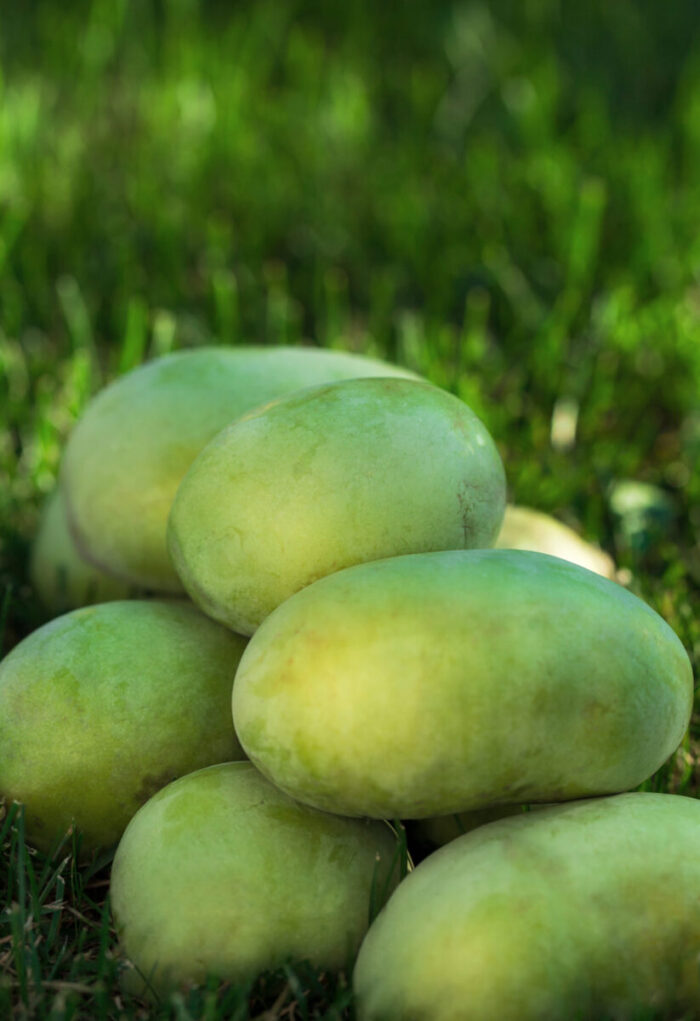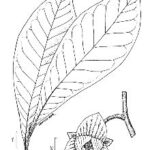Description
Latin Name: Asimina triloba
Common Names: Pawpaw, Paw Paw, Melon Tree, False Banana, Michigan Banana, Custard Apple
Zones: 4-8
Mature Height/Spread: Typically reaches 15-30 feet (4-9 meters) in both height and width. It can grow as a small tree or a large shrub (Missouri Botanical Garden).
Soil / Climate: Prefers moist, slightly acidic soils and requires regular watering but is adaptable to various conditions. Pawpaw thrives in humid climates and is frost tolerant. While it can grow in full shade, it does best in full sun to partial shade (Missouri Botanical Garden).
Notes: If not pruned, root suckers can form colonies (Missouri Botanical Garden). The bark is generally smooth with a wart-like texture, appearing brown with gray patches. The twigs are smooth and brown (Virginia Tech). The leaves are large and pear-shaped, ranging from 6-12 inches (15-30 cm) long, and tend to droop slightly due to their size. They are bright medium green and turn a bright yellow in the fall (Missouri Botanical Garden). Crushed leaves emit a peppery scent. In spring, the tree produces dark purplish-brown flowers, 1-2 inches (2-5 cm) across, with six cup-shaped petals (Virginia Tech). These flowers develop into edible fruits that are oblong and yellowish-green, maturing to dark brown in early fall. The fruits, 2-6 inches (7-16 cm) long, grow in clusters of 2 to 4 and have a sweet flavor reminiscent of banana or papaya. The fruit is used in baking, ice cream, or eaten raw. Native Americans used the fruit pulp to make dye (Missouri Botanical Garden).
Pollination: Pawpaw flowers are perfect, containing both male and female parts, but they are not self-pollinating. They are protogynous, meaning the female stigma matures and becomes non-receptive before the male pollen is released. Additionally, pawpaws are self-incompatible and require cross-pollination from another unrelated tree. Bees generally avoid pawpaw flowers; instead, flies and beetles perform the pollination. For home gardeners, hand pollination is recommended using a small, soft artist’s brush to transfer pollen. Pollen is ready when the anthers are brownish, loose, and crumbly. The stigma is receptive when the pistils are green, glossy, and sticky, while the anthers are firm and greenish to light yellow (California Rare Fruit Growers, Inc).
Problems: There are no major issues with this tree, though the fruit may cause nausea in some individuals (Missouri Botanical Garden).
Wildlife: Fruits are consumed by opossums, raccoons, foxes, and squirrels, often before humans can harvest them (Missouri Botanical Garden).
Cold Stream Farm supplies pawpaw trees which are grown as bare root seedlings and transplants and sold both wholesale and retail with no minimum order.
Sources:
Additional information on Asimina triloba can be found on the link: USDA / NRCS PLANTS Database.




















Dana –
Order 4. Came in the spring as anticipated. They were well packaged. 3 of the 4 are doing well. I blame our animals for the one that didn’t make it. It was broken as if one of them laid on top of it.